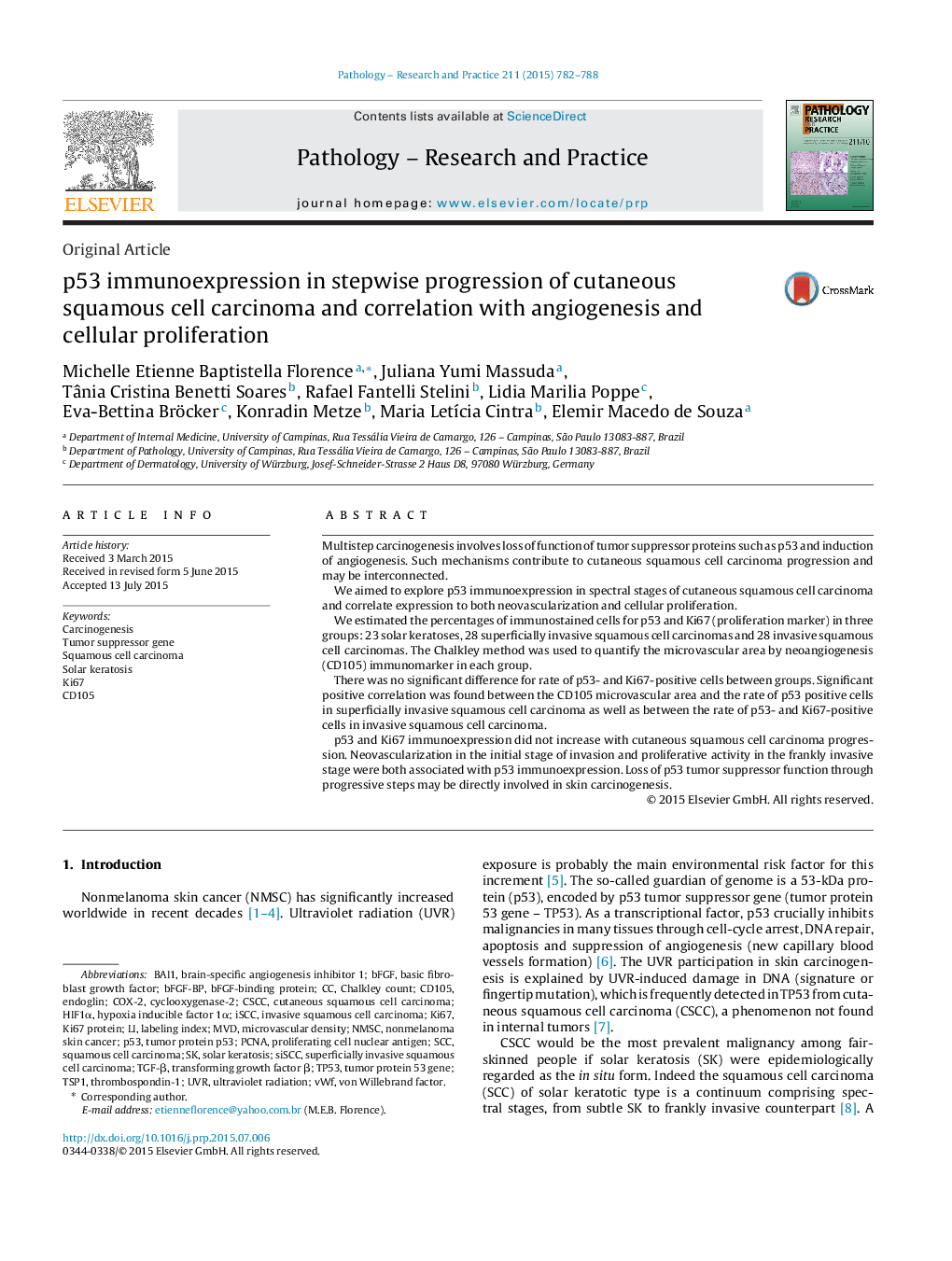| Article ID | Journal | Published Year | Pages | File Type |
|---|---|---|---|---|
| 2155187 | Pathology - Research and Practice | 2015 | 7 Pages |
Multistep carcinogenesis involves loss of function of tumor suppressor proteins such as p53 and induction of angiogenesis. Such mechanisms contribute to cutaneous squamous cell carcinoma progression and may be interconnected.We aimed to explore p53 immunoexpression in spectral stages of cutaneous squamous cell carcinoma and correlate expression to both neovascularization and cellular proliferation.We estimated the percentages of immunostained cells for p53 and Ki67 (proliferation marker) in three groups: 23 solar keratoses, 28 superficially invasive squamous cell carcinomas and 28 invasive squamous cell carcinomas. The Chalkley method was used to quantify the microvascular area by neoangiogenesis (CD105) immunomarker in each group.There was no significant difference for rate of p53- and Ki67-positive cells between groups. Significant positive correlation was found between the CD105 microvascular area and the rate of p53 positive cells in superficially invasive squamous cell carcinoma as well as between the rate of p53- and Ki67-positive cells in invasive squamous cell carcinoma.p53 and Ki67 immunoexpression did not increase with cutaneous squamous cell carcinoma progression. Neovascularization in the initial stage of invasion and proliferative activity in the frankly invasive stage were both associated with p53 immunoexpression. Loss of p53 tumor suppressor function through progressive steps may be directly involved in skin carcinogenesis.
